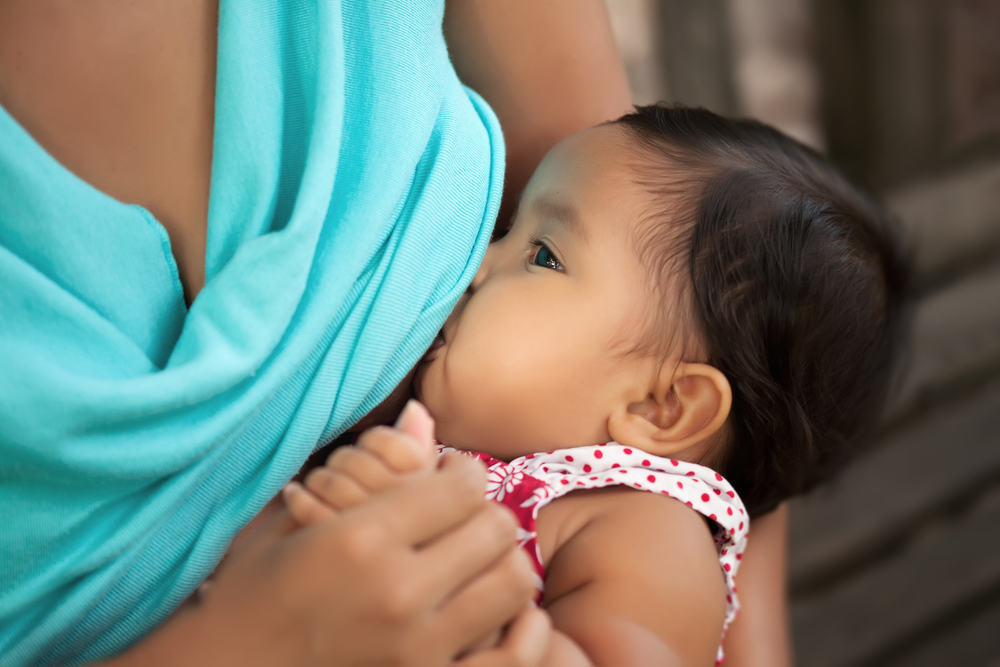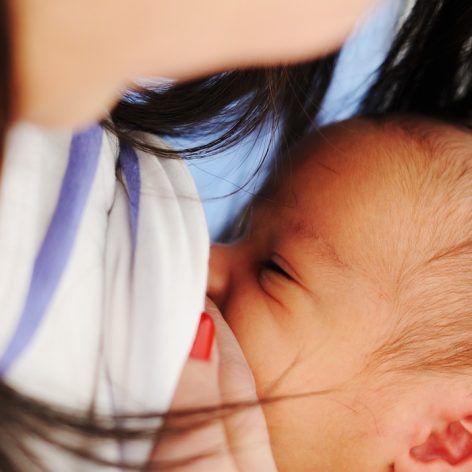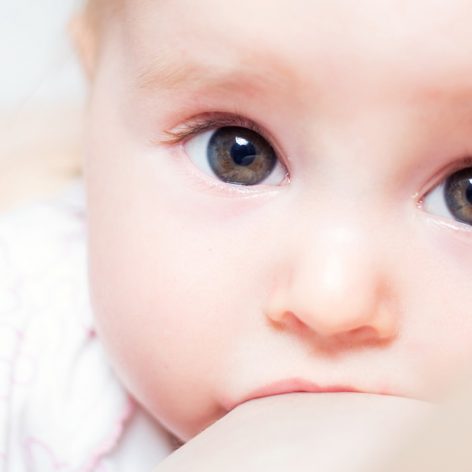Containing a wide range of nutritive and protective compounds, human milk as a sole source of nutrition enables the healthy growth and development of infants for the first six months of life.1WHO. Global strategy on infant and young child feeding. del. del. del. Published on 2003 But its composition is far from constant; human milk is actually a highly variable substance, tailored to the specific nutritional needs of the baby. Recent studies show that the composition of human milk changes throughout breastfeeding stages and even over the course of one feeding, depending on the gender of the infant, the mother’s diet and lifestyle, and, importantly, the infant’s health and development status.2Mizuno, et al. Int Breastfeed J. Published on 2009;4(1):7 ,3Hartmann In: Hale & Hartmann’s Textbook of Human Lactation, Published on 2007:3-16 ,4Coppa, et al. Digestive and Liver Disease. Published on 2006;38:S291-S294 ,5Newburg, et al. J Pediatr Gastroent Nutr. Published on 2000;30(2):131-33 ,6German, et al. (2008) Nestle Nutr Workshop Ser Pediatr Program, vol 62, pp 205-222 Gluckman PD, H. M. . Published on (2008) N Engl J Med,359, 61–73 ,7Field, et al. J Nutr. Published on 2005;135(1):1-4 ,8Blewett del. et al. Adv Food Nutr Res. Published on 2008;54:45-80

Over the course of one feeding
The major change in human milk composition, during a single feeding, is the proportion of fat. Foremilk is thin, watery, low in fat and contains important carbohydrates, proteins and vitamins. Hindmilk on the other hand is thick, creamy and high in fat.9Lonnerdal, et al. J Nutr. Published on 1986 116(4), 499-513 ,10Neville, et al. Am J Clin Nutr. Published on 1984;40(3):635-46 ,11Allen, et al. Am J Clin Nutr. Published on 1991;54(1), 69-80
Infant’s health status
There is new evidence to suggest that the levels of immune cells in human milk increases when an infant is infected by pathogens. This means the immune modulatory constituents change in response to the active infection of the infant.12Hassiotou, et al. Clin Trans Immunol . Published on 2013; 2:e3 ,13Riskin, et al. Pediatr Res. Published on 2012; 71:2
Gender
Recent studies found human milk from mothers of boys having 25% greater caloric content than from mothers of girls, at least in wealthy families. This supports fasting growth in newborn boys. 14Fujita M, et al. Am J Phys Anth. Published on 2012;149:52-59 ,15Hinde K, et al. Plos ONE 9. Published on 2014:e86169 ,16Michaelsen KF, et al. Am J Clin Nutr. Published on 1994;59:600–11 ,17Powe, et al. J Hum. Biol. Published on 2010; 22: 50-54

Season and climate
The composition of human milk can vary in different environments and different seasons. For example, the water content can adapt to fulfill the liquid demands of an exclusively breastfed baby even in hot and dry environments.18Sachdev, et al. Lancet. Published on 1991;337:929-33 Similarly, distinct constituents of human milk, such as vitamin D or immune components seem to vary depending on seasonal factors.19Ala-Houhala, et al. Am J Clin Nutr. Published on 1988;48(4):1057-60 ,20Lemay D, et al. Genome Biol. Published on 2009:10, R43
Mother’s genes
A substantial part of worldwide variability in the quality and quantity of human milk components, like lipids and prebiotics, is linked to the genetic differences between mothers.21Coppa del. et al. JPGN. Published on 2011 ,22Thurl, et al. Br J Nutr. Published on 2010;104:1261-71
Mother’s diet
Studies show that a mother’s diet, even during pregnancy, can influence the composition of her milk during breastfeeding. For example, the maternal intake of several vitamins, minerals, and certain fats are linked to the composition of human milk.23Lonnerda, J Nutr. Published on 1986;116(4), 499-513 ,24Wong, et al. J Lipid Res. Published on 1993;34(8), 1403-11 Optimising the maternal diet during pregnancy and lactation is therefore important.

Culture and lifestyle
A great part of variability in human milk composition is controlled by a mother’s way of interacting with the environment and the culture of her social group. For example, family, friends or local culture often determine how a mother breastfeeds. Moreover, the readout of many genes involved in lactation is directly or indirectly influenced by cues from external and social environments.
View References
| 1 | WHO. Global strategy on infant and young child feeding. del. del. del. Published on 2003 |
|---|---|
| 2 | Mizuno, et al. Int Breastfeed J. Published on 2009;4(1):7 |
| 3 | Hartmann In: Hale & Hartmann’s Textbook of Human Lactation, Published on 2007:3-16 |
| 4 | Coppa, et al. Digestive and Liver Disease. Published on 2006;38:S291-S294 |
| 5 | Newburg, et al. J Pediatr Gastroent Nutr. Published on 2000;30(2):131-33 |
| 6 | German, et al. (2008) Nestle Nutr Workshop Ser Pediatr Program, vol 62, pp 205-222 Gluckman PD, H. M. . Published on (2008) N Engl J Med,359, 61–73 |
| 7 | Field, et al. J Nutr. Published on 2005;135(1):1-4 |
| 8 | Blewett del. et al. Adv Food Nutr Res. Published on 2008;54:45-80 |
| 9 | Lonnerdal, et al. J Nutr. Published on 1986 116(4), 499-513 |
| 10 | Neville, et al. Am J Clin Nutr. Published on 1984;40(3):635-46 |
| 11 | Allen, et al. Am J Clin Nutr. Published on 1991;54(1), 69-80 |
| 12 | Hassiotou, et al. Clin Trans Immunol . Published on 2013; 2:e3 |
| 13 | Riskin, et al. Pediatr Res. Published on 2012; 71:2 |
| 14 | Fujita M, et al. Am J Phys Anth. Published on 2012;149:52-59 |
| 15 | Hinde K, et al. Plos ONE 9. Published on 2014:e86169 |
| 16 | Michaelsen KF, et al. Am J Clin Nutr. Published on 1994;59:600–11 |
| 17 | Powe, et al. J Hum. Biol. Published on 2010; 22: 50-54 |
| 18 | Sachdev, et al. Lancet. Published on 1991;337:929-33 |
| 19 | Ala-Houhala, et al. Am J Clin Nutr. Published on 1988;48(4):1057-60 |
| 20 | Lemay D, et al. Genome Biol. Published on 2009:10, R43 |
| 21 | Coppa del. et al. JPGN. Published on 2011 |
| 22 | Thurl, et al. Br J Nutr. Published on 2010;104:1261-71 |
| 23 | Lonnerda, J Nutr. Published on 1986;116(4), 499-513 |
| 24 | Wong, et al. J Lipid Res. Published on 1993;34(8), 1403-11 |


